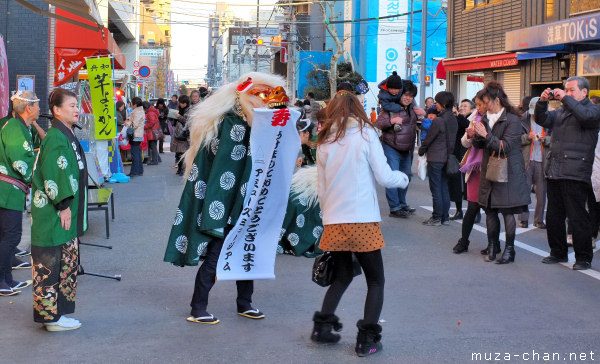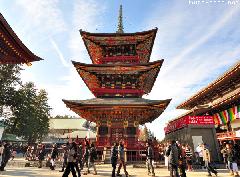During the first days of the year in Japan, in the traditional areas or at Shinto shrines, you can witness one of the oldest Japanese traditions for the New Year, Shishi-mai, the Japanese lion dance.
Originally from China, the old legend of the lion dance says:
Once a monk had a bad dream, seeing a future with diseases and disasters. He then prayed to the gods to teach him how to prevent the misfortunes and the gods told him that a lion will provide protection and will fight against the evil spirits.
Then the monk started working to create the image of a lion, but because he didn’t know how a real lion looks like, he combined the most powerful magical animals he knew…
That’s how shishi, the Chinese lion appeared and soon the shishi image spread through all the countries around China, including Japan. In Japan, the lion dance suffered many changes over the years, the music and the dance varying from a region to another. However, the lion’s representation is similar to the Chinese one: a red wooden head (shishi-gashira) with a body made from a green cloak with white drawings. The shishi can be handled by one or two performers.
I had the chance to see such a performance on January 2nd, at the Amuse Museum in Asakusa. Like in many other occasions, I was delighted to see how the old traditions are still strong in Japan: many people were approaching the lions to be “bitten” on the head - that way it is said that the magic of shishi will protect you from evil spirits and will drive away bad luck. Of course, others were happy to take pictures with the lions… Me? I let myself to be “bitten", but I also took a lot of photos!
EXIF Info:
|
Yesterday’s Japan Photo:Original colored three-storied pagoda at Naritasan Temple |



